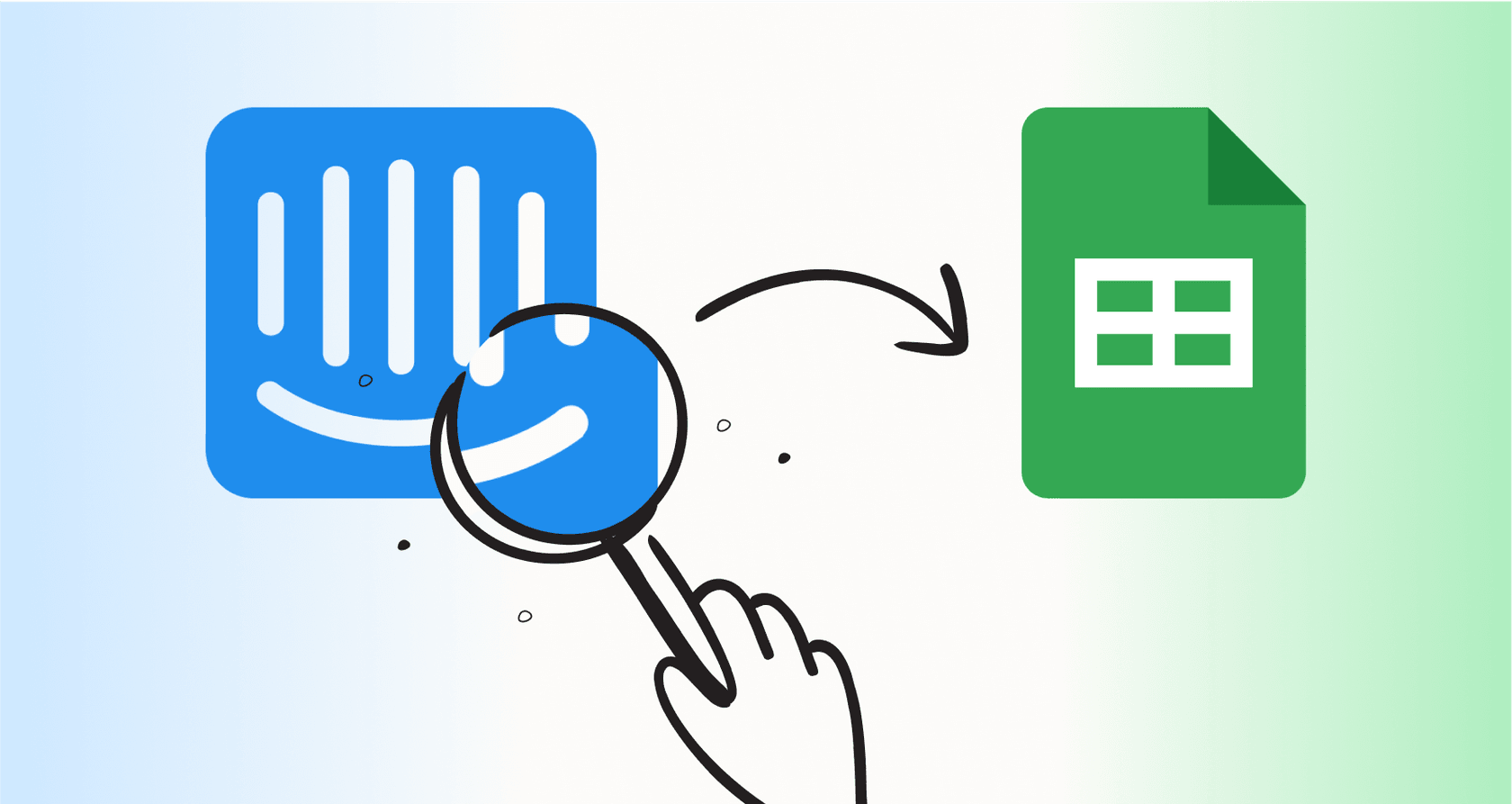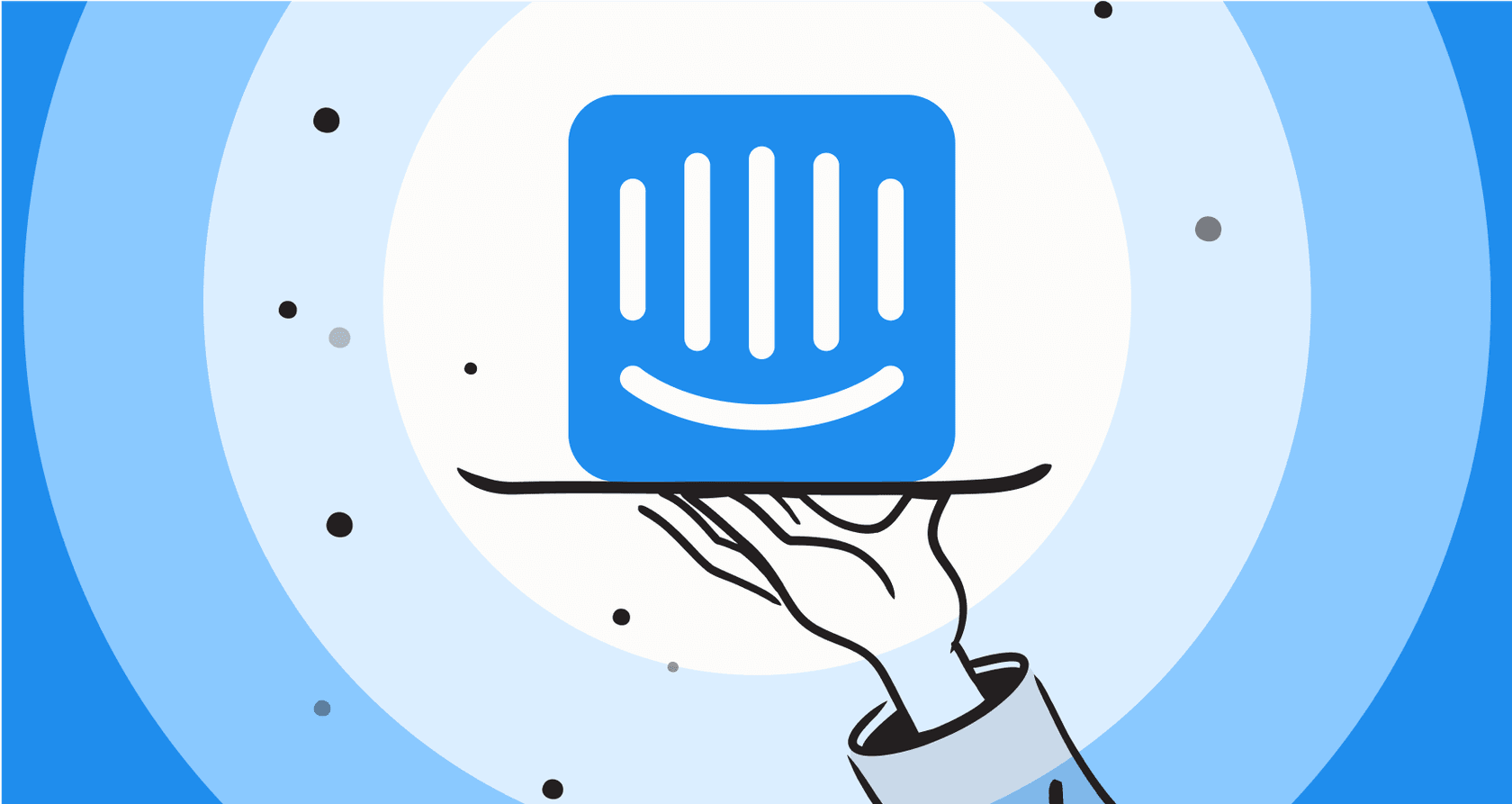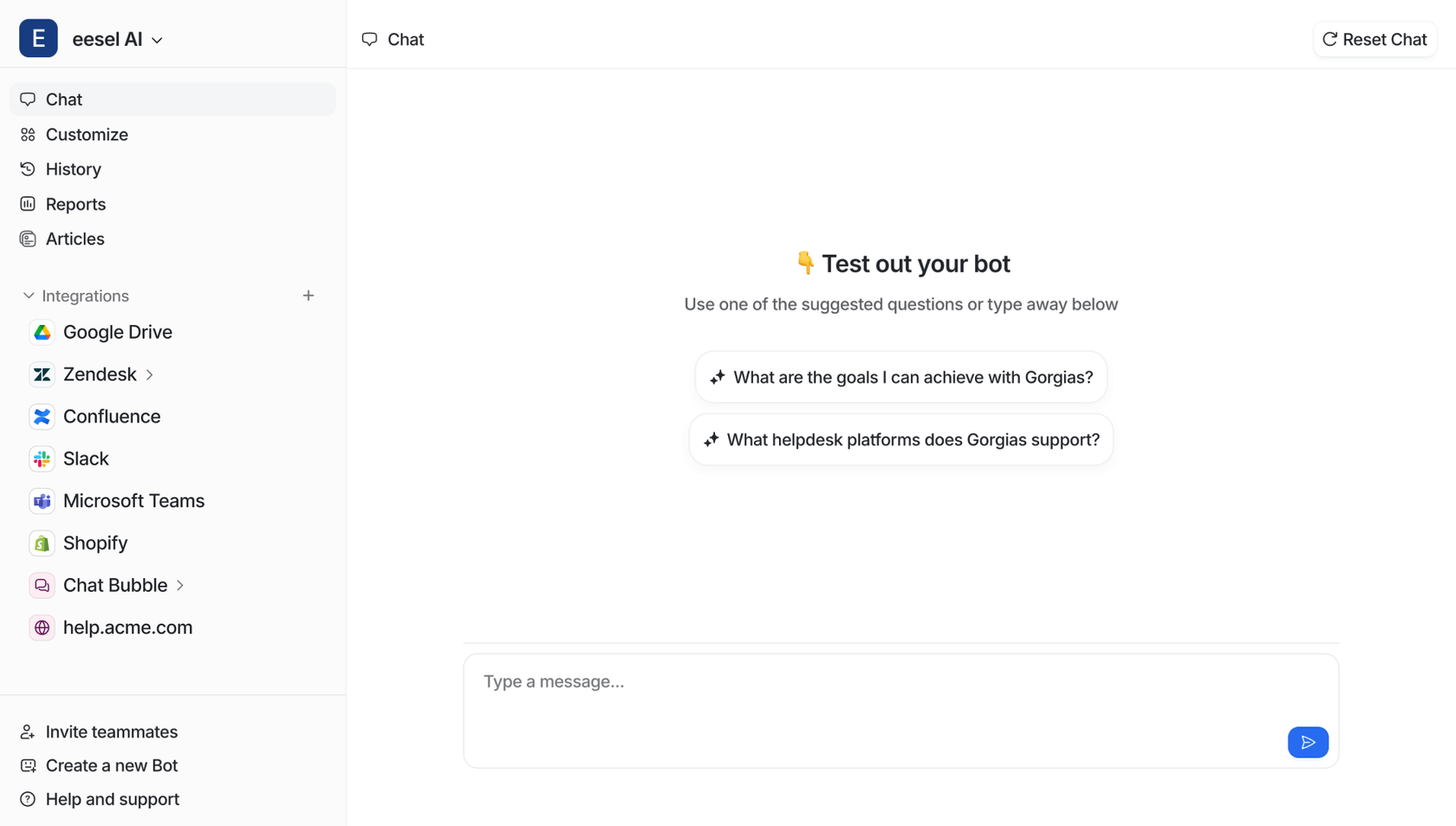HubSpot vs Intercom: A 2025 deep dive for customer support teams

Stevia Putri
Last edited September 27, 2025

Picking a new customer service platform feels like a huge commitment, doesn’t it? It’s one of those big decisions that not only hits the budget but also completely changes your team’s day-to-day work, how efficient your agents are, and ultimately, how happy your customers are. When you start looking, two names always seem to pop up: HubSpot and Intercom. And they couldn’t be more different.
HubSpot shows up as the all-in-one CRM, promising to keep everything about your business in one place. Intercom, on the other hand, calls itself the conversational relationship platform, built for making real-time connections with customers.
So, where do you even start? This blog is a straightforward HubSpot vs Intercom comparison. We’ll get into their main features, take a close look at their AI, and uncover what they really cost to help you make a call that actually works for your team.
What is HubSpot Service Hub?
HubSpot Service Hub is the customer service arm of the massive HubSpot Customer Platform, which also covers Marketing, Sales, Content, and more. Its whole pitch is about unification. The idea is to have every single customer interaction, from the first marketing email they ever opened to their most recent support ticket, all logged in one central CRM.
This makes it a pretty logical choice for businesses, usually small to mid-sized ones, that are already all-in on the HubSpot ecosystem or are planning to be. If you want marketing, sales, and support all reading from the same script and looking at the same data, Service Hub is built for you.
Its features will feel pretty standard to anyone who’s used a traditional helpdesk before. You get a ticketing system, a shared inbox, a knowledge base for customers to help themselves, reporting dashboards, and customer portals for tracking requests. It’s all designed to feel like one piece of a much larger puzzle.
What is Intercom?
At its heart, Intercom is all about customer communication. Everything it does revolves around its Business Messenger, a seriously powerful tool for real-time chat. The philosophy isn’t just about solving problems; it’s about building relationships through proactive and personal messages right where your customers are.
It’s a popular pick for SaaS and e-commerce companies that want to talk to customers directly on their website or inside their app. Think less about formal tickets and more about actual conversations.
Its key features reflect this. You get top-notch live chat, an AI chatbot named Fin, a conversation-focused shared inbox, and tools like Product Tours to help onboard new users. It’s all geared towards immediate connection. Many teams that love this chat-first approach also want an AI that can work with it, which is why eesel AI has a seamless Intercom integration.
HubSpot vs Intercom: A breakdown of core features
Alright, let’s get into the details. While both platforms are about talking to customers, the way they do it shows their core differences and the trade-offs you’ll have to consider.
Ticketing and shared inbox
HubSpot sticks with a traditional ticketing system that’s tied directly into its CRM. It’s made for tracking, routing, and reporting on support issues as individual records. The whole interface is structured around the ticket, which is perfect for teams that need a clear, formal process for every single request.
Intercom’s inbox feels more like a modern messaging app you’d use on your phone. It’s designed to manage live chats and keep conversations moving. It can handle email, but it’s not really built for those long, complicated email chains that can drag on for days. Speed and fluidity are the priorities here, not formal procedure.
The catch: The biggest headache with both is that you’re stuck in their world. Your data, workflows, and automations are all locked in. If you decide you want to switch helpdesks or connect with another specialized tool, you’re in for a complicated and often frustrating migration project.
Knowledge base and self-service
HubSpot gives you a standard knowledge base and, if you’re on a pricier plan, a dedicated Customer Portal where customers can log in to see their ticket status. It’s functional and does the job. It even gets a little help from HubSpot’s built-in SEO tools to help your articles show up on Google.
Intercom’s "Help Center" is made to work directly with its messenger. An AI bot can suggest articles right in the chat, or an agent can pull them into a conversation with a click. This creates a really smooth, in-the-moment self-service experience that keeps customers right where they are.
The catch: With both platforms, creating and maintaining all this content is a manual slog. Neither HubSpot nor Intercom has a built-in way to automatically scan your support conversations, figure out what customers are really asking, and then generate draft articles to fill those gaps.
Live chat and chatbots
HubSpot’s live chat is a feature of its Service Hub; it works, but it isn’t the star of the show. Their chatbots are mostly built on workflows, meaning you have to create a decision tree for them to follow. They’re fine for simple things like qualifying a sales lead or sending a customer to the right team, but they aren’t designed for a natural, back-and-forth chat.
This is really where Intercom shines. Its Business Messenger is one of the best out there, it’s quick, customizable, and just feels good to use. Their AI chatbot, Fin, is a central part of the platform and is built to handle much more complex, conversational support.
| Feature | HubSpot Service Hub | Intercom |
|---|---|---|
| Primary Focus | Unified CRM & Ticketing | Conversational Engagement |
| Best For | Teams invested in the HubSpot ecosystem | Teams prioritizing real-time chat & support |
| Chatbot AI | Workflow-based (Breeze Customer Agent) | Conversational AI (Fin) |
| User Interface | Traditional helpdesk | Modern messaging app |
| Self-Service | Knowledge Base + Customer Portal | Integrated Help Center in Messenger |
The AI layer: Fin vs Breeze and platform lock-in
These days, you can’t really talk about support platforms without talking about AI. It’s become essential. Here’s how HubSpot and Intercom handle it, and why their built-in approaches might be holding you back.
Intercom’s Fin AI agent
Fin is Intercom’s AI agent. It can answer customer questions around the clock based on your Help Center articles and smoothly pass the conversation to a human if it gets stuck. It’s a capable tool with solid conversational skills, but it comes with some pretty big strings attached.
-
The Pricing Model: Fin is priced at $0.99 per resolution. That pricing model can feel a bit unpredictable, and honestly, it can feel like you’re being penalized for having a successful bot. If you have a busy month, your bill shoots up, which makes budgeting a real challenge.
-
Ecosystem Lock-in: Fin only works if you’re using Intercom. If your team is on Zendesk, Freshdesk, or another helpdesk, you can’t use it unless you’re ready to move your entire support operation over.
-
Limited Knowledge Sources: Fin mostly learns from your polished Intercom Help Center articles. Getting it to learn from the messy, real-world knowledge buried in thousands of old tickets or your team’s internal Google Docs is a much bigger project.
HubSpot’s Breeze AI agent
Breeze is HubSpot’s AI for support. It’s built to answer common questions over chat and email by using your knowledge base and, importantly, your HubSpot CRM data. This lets it give personalized answers based on a customer’s specific history.
-
Ecosystem Lock-in: Just like Fin, Breeze is a HubSpot-only club. You can’t just buy it and plug it into another tool.
-
Complexity: Because it’s one feature in a gigantic platform, setting up and fine-tuning Breeze can get complicated. Often, the most useful AI features are only available on the most expensive enterprise plans.
-
Rigid by Design: Breeze is made to operate inside HubSpot’s world. This means you have less control over the AI’s personality, its automation rules, and the specific things it can do compared to a standalone AI platform.
A flexible AI layer: An alternative
But what if you didn’t have to get locked into the AI offered by your helpdesk? There’s another way to think about it: pick the best-in-class AI platform that can connect to the tools your team already uses.
This is where a solution like eesel AI really changes things. eesel AI connects directly with platforms like Intercom, Zendesk, Freshdesk, and many others. It adds a powerful, independent AI layer right on top of your existing helpdesk, so you don’t have to tear everything down and start over.
 This image shows how a flexible AI layer connects with multiple helpdesks and knowledge sources.
This image shows how a flexible AI layer connects with multiple helpdesks and knowledge sources.Here’s what that actually means for your team:
-
Get started in minutes, not months: You can connect your helpdesk with a click and get going on your own. No required sales calls or long onboarding projects.
-
Clear and predictable pricing: eesel AI plans are based on interaction volume, with no per-resolution fees. Your costs are stable and won’t spike just because you’re growing.
-
Bring all your knowledge together: You can train your AI on what it actually needs to know: thousands of past support tickets, internal wikis in Confluence or Notion, and scattered Google Docs. It learns from how your team really works, not just a few perfect help articles.
-
Test without the risk: Before any customer talks to your bot, you can run it in a simulation using thousands of your past tickets. This gives you an accurate forecast of how it will perform so you can make adjustments before it goes live.
Pricing showdown: HubSpot vs Intercom
Okay, let’s talk money. At first glance, the pricing models look pretty different, but they both have a way of getting expensive quickly once you add the features you really need.
HubSpot Service Hub pricing
HubSpot’s plans are structured to draw you deeper into their ecosystem. The starting price can look appealing, but the most valuable features are often held back for the higher tiers.
-
Starter: Kicks off around $45 per month for 2 users. This gets you the basics like ticketing, live chat, and a shared inbox.
-
Professional: This is a big jump to $450 per month for 5 users. This is where you get things like automation, customer portals, and surveys.
-
Enterprise: Starts at $1,200 per month for 10 users. This tier is for larger teams that need advanced permissions and reporting.
The main thing to know is that the features that make Service Hub truly useful, including its AI, are tucked away in the pricier Professional and Enterprise plans.
Intercom pricing
Intercom uses a per-seat model, which can add up fast as you add more people to your team. But the real surprise can come from the à la carte pricing for its best features.
-
Essential: Starts around $39 per seat/month for basic chat and email support.
-
Advanced: Starts around $99 per seat/month and adds more automation and integrations.
-
Expert: Starts around $139 per seat/month and is aimed at larger teams.
The biggest add-on cost to watch for is the Fin AI Agent, which is an extra $0.99 for every single resolution. On top of that, other key features like Product Tours are also paid add-ons. This makes Intercom’s total cost pretty variable and sometimes hard to pin down.
This video provides a visual breakdown of the key differences in features and usability between HubSpot and Intercom for customer support.
Choose the platform, then choose your AI
So, after all that, what’s the final call in the HubSpot vs Intercom debate? It really depends on what your main priority is.
Go with HubSpot if your whole company is on board with its all-in-one approach. If you need your marketing, sales, and service data to be perfectly connected and you’re willing to pay for the Professional or Enterprise plans to make that happen, it’s a solid platform.
Go with Intercom if your business is all about real-time, conversational support. If having the best live chat and proactive ways to engage customers are your top concerns, nobody does it better.
But here’s the real takeaway: your choice of helpdesk doesn’t have to dictate your choice of AI. The best move you can make is to pick the helpdesk that fits how your team works, and then power it up with an AI engine that’s more flexible, more capable, and more cost-effective.
A platform like eesel AI lets you keep the tools you like while getting better automation, smarter resolutions, and pricing that makes sense. You don’t have to replace your helpdesk, you can just make it better.
Frequently asked questions
The main difference lies in their core philosophies: HubSpot offers an all-in-one CRM experience focused on unified data and traditional ticketing, while Intercom specializes in real-time, conversational support with a powerful live chat messenger. Your choice depends on whether your priority is a centralized ecosystem or direct customer engagement.
For businesses already invested in the HubSpot ecosystem (e.g., Marketing Hub, Sales Hub), HubSpot Service Hub is often the more logical choice. It provides seamless integration of customer data across all departments, ensuring everyone works from a single source of truth. There are also many AI tools for HubSpot that can enhance the ecosystem.
HubSpot’s Breeze AI is workflow-based and leverages CRM data for personalized answers, typically available on higher-tier plans. Intercom’s Fin AI is a conversational agent, learning from your Help Center, but it comes with a per-resolution pricing model. Both are tightly integrated into their respective platforms, leading to ecosystem lock-in.
HubSpot’s pricing escalates significantly across tiers, with its most valuable features, including AI, locked into Professional and Enterprise plans. Intercom uses a per-seat model, but its Fin AI agent incurs an additional $0.99 per resolution fee, and other advanced features are paid add-ons, making its total cost potentially variable.
Yes, a flexible AI layer like eesel AI can integrate with your existing helpdesk, whether it’s HubSpot, Intercom, or another platform. This allows you to leverage a powerful AI agent with advanced capabilities trained on all your knowledge sources without being restricted by your helpdesk’s native AI offerings or their specific pricing models.
Intercom excels in this area with its highly customizable Business Messenger, designed for immediate and proactive customer engagement. While HubSpot offers live chat, it’s more of a standard feature within its broader CRM, not its primary focus, making Intercom the stronger choice for chat-first support teams.






